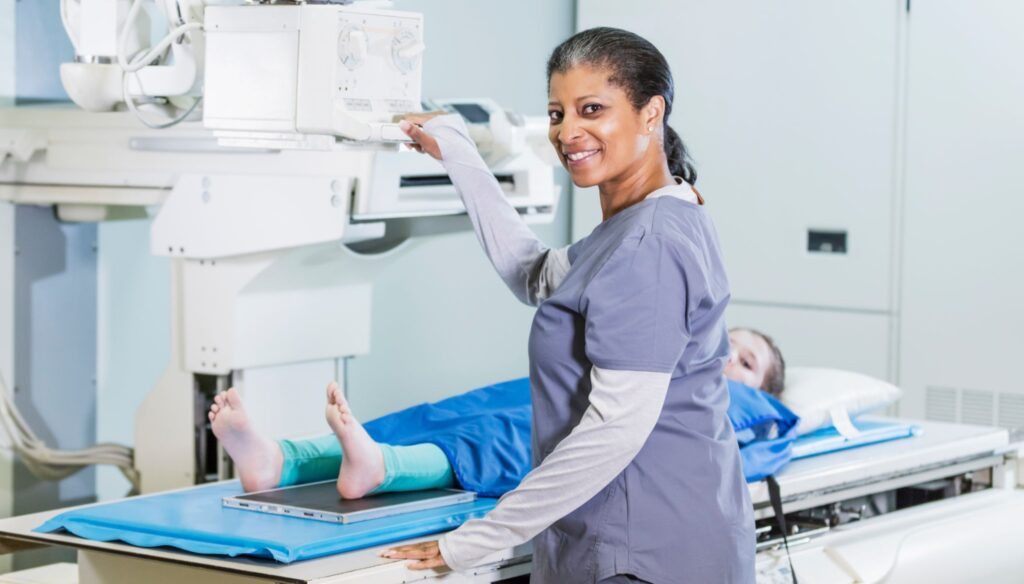Diploma Courses
Dip-in-x-ray-technology
Developing With a Passion While Exploring The World.
There are many benefits to pursuing a career in nursing. Some of the benefits include excellent security, salary, and benefits. Nurses are always in demand and the U.S. Bureau of Labor Statistics (BLS) projects a 9% growth rate in the field between now and 2030. Many states are experiencing a nursing shortage, meaning lots of job opportunities. Hospitals and healthcare facilities need qualified nurses, and some even pay large sign-on bonuses for experienced nurses.
Clinical Biochemistry: Covers the study of biochemical processes and laboratory techniques to analyze blood and body fluid samples.
Microbiology: Focuses on the study of microorganisms, their identification, and their role in diseases.
Hematology: Deals with the study of blood and blood-related disorders, including blood cell morphology and blood clotting mechanisms.
Clinical Pathology: Involves the study of body fluids, tissues, and cells for diagnosing diseases.
Immunology and Serology: Covers the immune system, immunological tests, and techniques to detect antibodies and antigens.
Histopathology: Deals with the study of tissues and cells under a microscope to diagnose diseases.
Lab Equipment and Techniques: Teaches students about various laboratory instruments, their operation, and common laboratory techniques.
Quality Control and Laboratory Management: Focuses on maintaining quality standards in laboratory operations and managing laboratory processes.
8 Month
Theory
18 - 30
Age
10th & Above
Eligibility
1 Year
Duration
4 Month
On Job Training

What will you learn?
- Radiographic Procedures
- Learn how to create x-rays of body using the X-ray machines. A part of body is exposed to ionizing radiation to produce an image.
- Learn how to position the patients for X-ray and electrocardiogram procedures.
- Explore the basic aspects of anatomy and physiology, a scientific study of human structure.
- Study radiology physics involving the application of physics concepts, methods and theories to medicines.
Here are some Career Opportunities:
After completing a DMLT course, graduates can work as:
- Medical Laboratory Technicians
- Laboratory Assistants
- Pathology Technicians
- Blood Bank Technicians
- Research Assistants in medical research laboratories
- Pharmaceutical company laboratory staff

Practical:
Practical conducted in stimulated labs that are highly equipped with modern facilities to help students develop a broad understanding of fundamental concepts and learn how to operate different imaging equipment.
On-the-Job-Training:
Students are placed for on-job training to learn by observing and handling the job under the guidance of healthcare professionals. It provided them with a better industrial exposure to learn new skills in the real-working environment from healthcare experts.
Study Tours:
Industrial visits or study tours to leading hospitals to help them learn intricate nuances of X-ray and electrocardiogram procedures from professionals and ensure our students develop required competency mandatory for career planning.
FAQ
Most frequent questions and answers
Dip-in-x-ray-technology, also known as radiologic technologists, are medical support professionals who specialize in the operation of x-ray equipment. … Between procedures, technicians maintain x-ray equipment to ensure that it is in good working order.
10th passed from a recognized board.
Dip-in-x-ray-technology is a good career choice as radiography is a fast growing job market with a 21% projected increase from 2012 to 2022.
Dip-in-x-ray-technology, also called radiologic technologists, operate imgaing machines to produce medical images of a patient’s body.
It is a fast growing career. Professionals having excellent technical and analytical skills are in great demand as they operate imaging technology equipment which helps doctors to diagnose illness.


